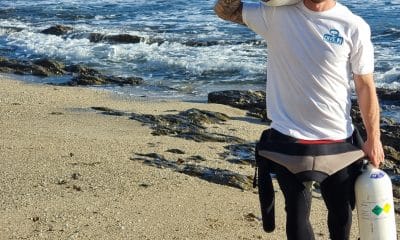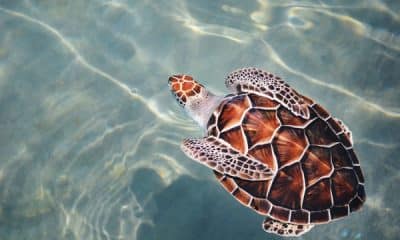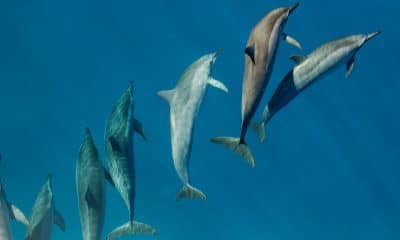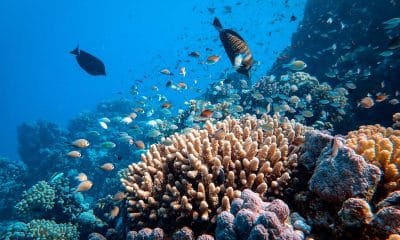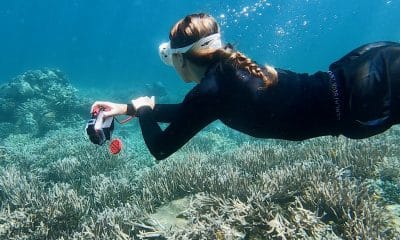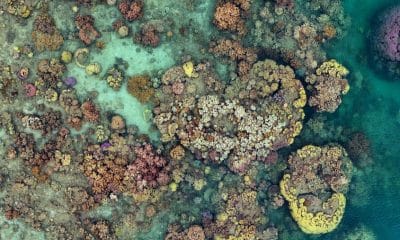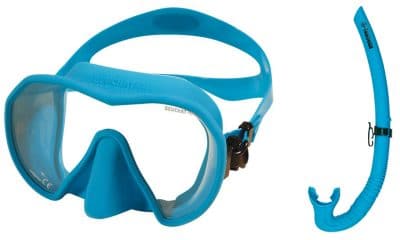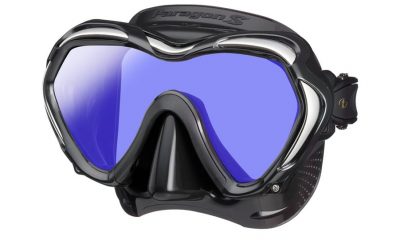Blogs
Florida Shark Snorkel
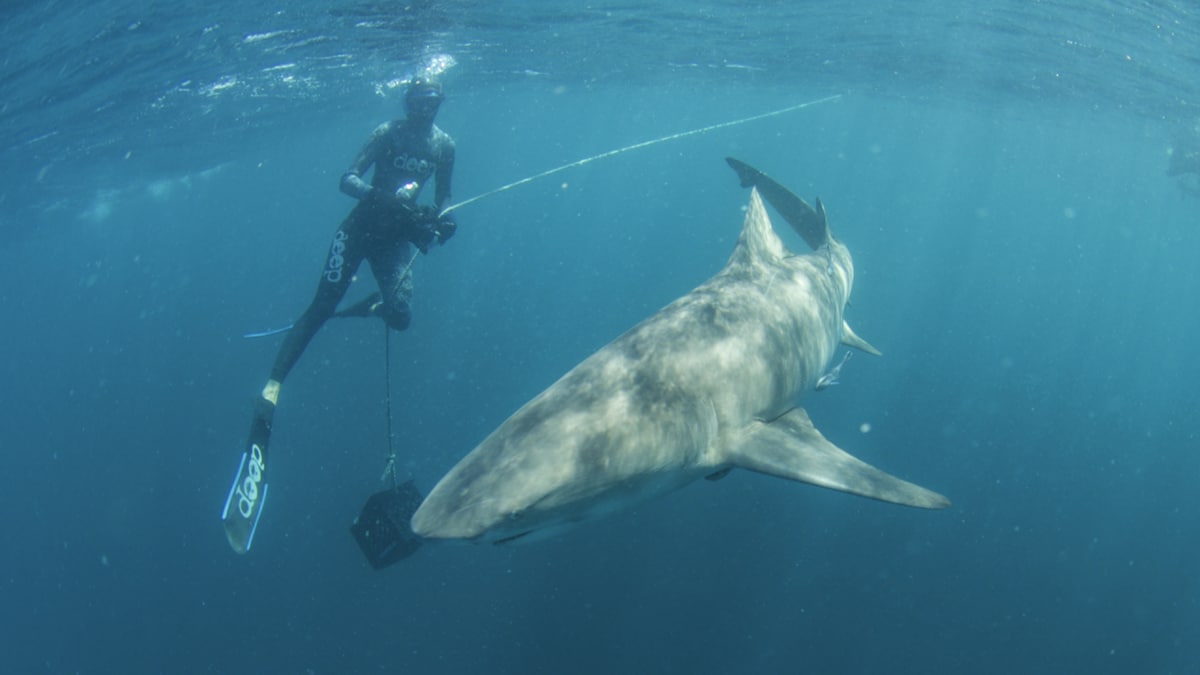
CJ & Mike from Bimble in the Blue snorkel with sharks off Jupiter in Florida…
Florida has one of the largest concentrations of sharks in the world, with sharks present year-round. The Sunshine State is known to have tiger sharks, great hammerheads, bulls, scalloped hammerheads, lemons, sandbars, reefs, black tips, makos, duskys and silky sharks either visiting or resident in its waters. Depending on the time of year many of these species can be seen on dive sites off of its Atlantic coast near Jupiter, earning it a reputation as one of the USA’s top shark diving spots.
Jupiter gained global notoriety for its annual lemon shark aggregation after featuring on BBC’s “Blue Planet 2”. Every year from December to late March lemon sharks follow the nutrient-rich Gulf Stream sweeping up Florida’s Atlantic coast. It is thought that they congregate near the coast here to mate and subsequently return to the mangroves of the Bahamas to give birth. Researchers actively documenting the aggregation have discovered that in addition to the lemon sharks, blacktips migrate in their thousands just offshore during winter. Given this abundance of life, it’s not surprising that divers and shark lovers gather here to witness these amazing creatures up close.
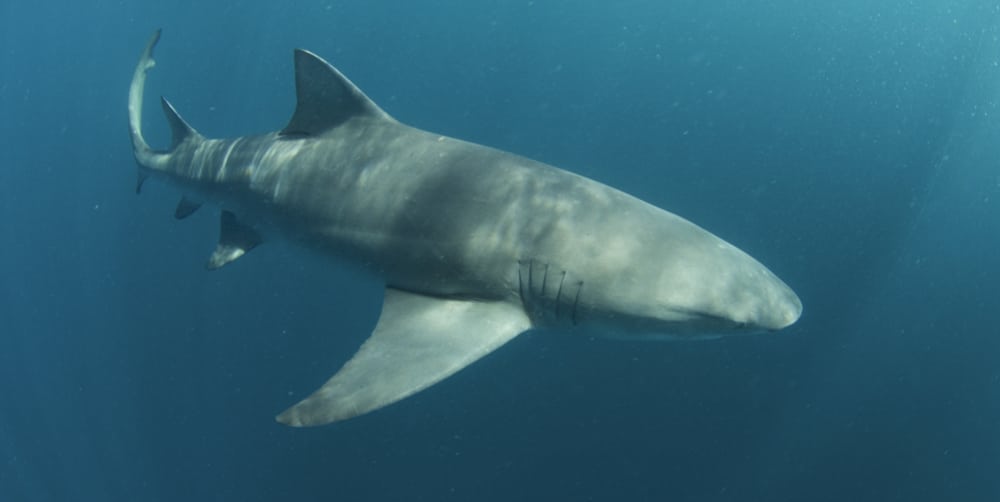
Sadly sharks are fished both commercially and recreationally from the Florida coast to the waters of the Bahamas. Getting people to view sharks as more valuable alive than dead is a major part of the conservation focus in Jupiter. Several local eco-tourism companies offer shark tours catering to divers, snorkelers and those wishing to view sharks from the comfort of a boat. With 3 international airports within driving distance and less than a 45 minute boat ride to most sites, if you want to get in the water and swim with sharks, this seems one of the easiest and most accessible ways to do it.
Recently Mike and I were fortunate enough to be transiting through Miami and thought it would be a great opportunity to delay our onward travel a few days to experience this amazing event. After a bit of research on the various tour operators, we booked a snorkel trip with https://floridasharkdiving.
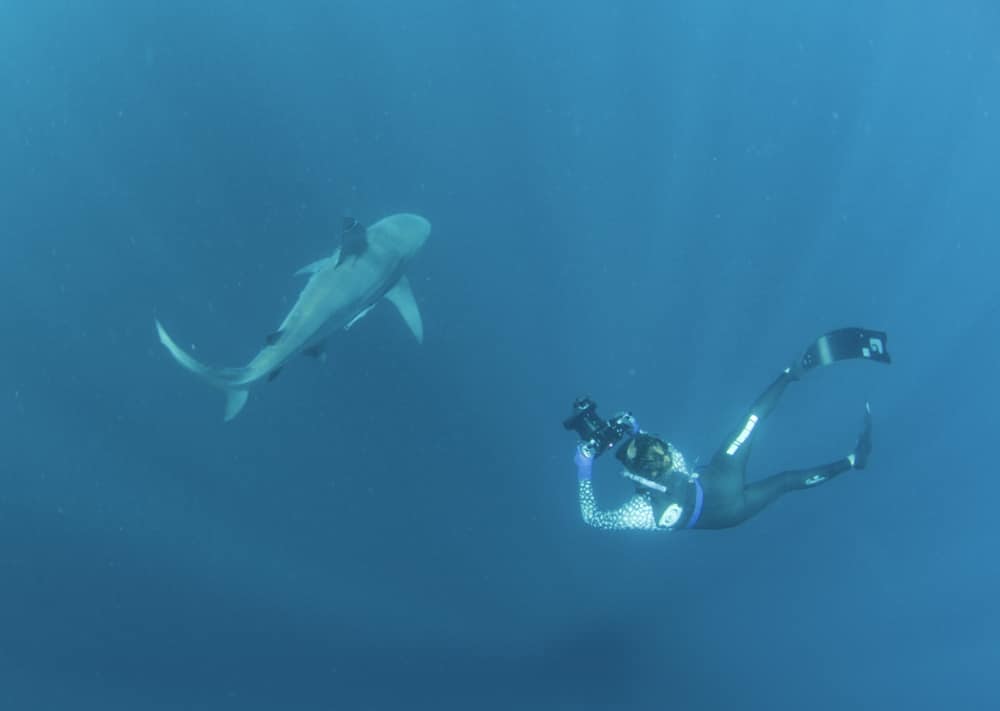
We headed over to the marina on a sunny yet pleasantly cool morning to meet with our captain and other shark enthusiasts. With a stunning view of the Jupiter lighthouse across the waterway we were met by our friendly and efficient boat captain as the crew prepared our boat with supplies and introduced us to each other. Having signed in and completed the necessary paperwork, we split into 2 groups of 6 to keep the group sizes small. The boats were comfortable and fast and we enjoyed the cruise out of the Jupiter inlet and into the slight swell.
In under 30 minutes we were about 4 miles offshore at a site known for regular lemon and bull shark sightings. In fact, the company has nicknamed it “Lemon Drop” for its predictability. Our 3 crew consisted of the Captain, our in water guide and shark specialist and a second in water safety freediver, all very knowledgable and enthusiastic! On the way we were briefed on the boat safety features, what to expect on the upcoming experience and good in-water etiquette to keep both the sharks and ourselves happy.
We had expected to be waiting a while for the sharks to come in and investigate the boat, but less than 5 minutes after we arrived the first bull sharks were spotted below the surface, quickly followed by the call of “Lemon shark!” We donned our fins and masks and slipped into the water along a buoy line to join our toothy friends and get a better look. Our guide expertly drew the sharks towards us with a baited milk crate while also supervising the group, and we were soon totally absorbed watching a 3m long lemon shark and 15 or more bull sharks circling below and coming in for close passes.
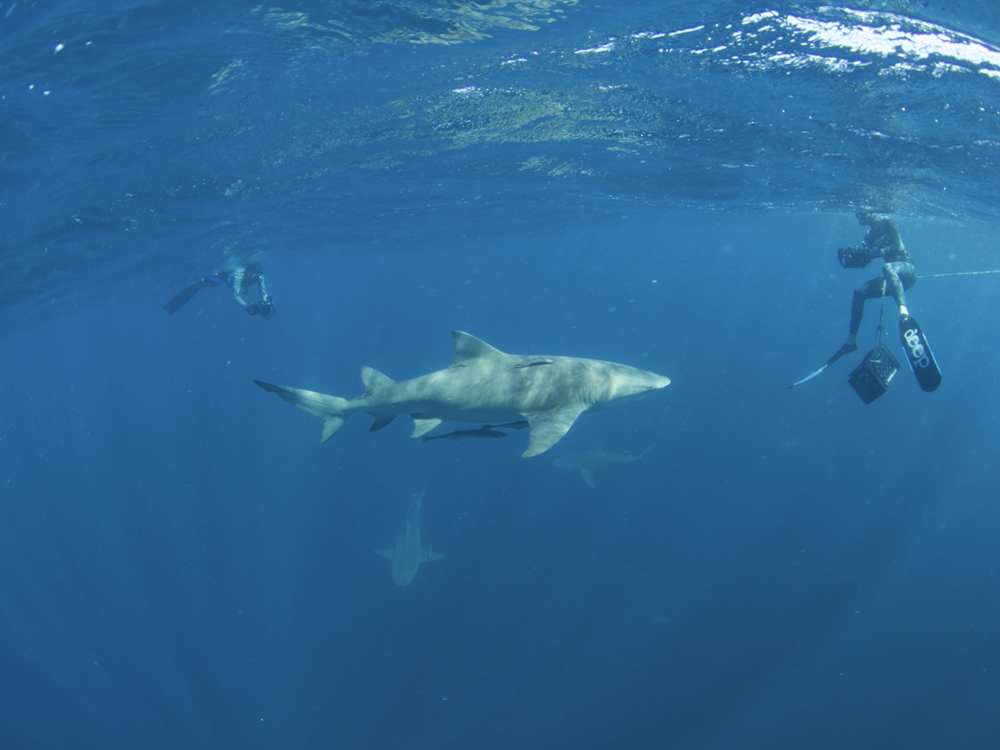
My GoPro seemed to attract some of the sharks in, which gave me some fantastic close encounters, and an hour passed before we knew it. Mike took so many photos he ran out of battery and we were both so engrossed we hadn’t realised how fast the time had gone. We thrilled at being so close to so many large sharks, while they seemed perfectly at home cruising around us, eyeing these odd ungainly creatures bobbing on the waves in their blue domain.
Everyone was full of excited chatter on the return trip and we were escorted in by a squadron of pelicans seeking fishy scraps. For us it was a short trip and we were glad to have gotten to see 2 iconic species on our blue water drift. Later that week we heard that they were joined by some hammerheads too.
The opportunity to potentially see different shark species just a 45min ride from shore is pretty incredible. The Intracoastal Waterway also features manatees that can often be sighted enjoying the warm water, nurse sharks as well as osprey hunting from above and the charismatic pelicans. It is certainly an area worth taking the time to visit.
In the winter, the waters off Jupiter average around 24°C. This means most people will feel comfortable in a 5mm wetsuit. Tour operators recommend full wetsuits, gloves and hoods as well as the water will be a bit cooler at 30m. Gear can be rented if you are traveling light and the trip can be planned to include other tours if you have time to spare. The Florida Keys are just a short drive south down the US 1. Wildlife enthusiasts can visit the everglades, drive to the west coast to do a manatee snorkel in Crystal River, or for more shark action of a different kind, join a megalodon tooth hunt near Venice. The only big decision you have to make in Florida is which do you fancy doing first?
Blogs
The Suit Ocean Team leads the Ultimate Curacao Snorkeling Adventure
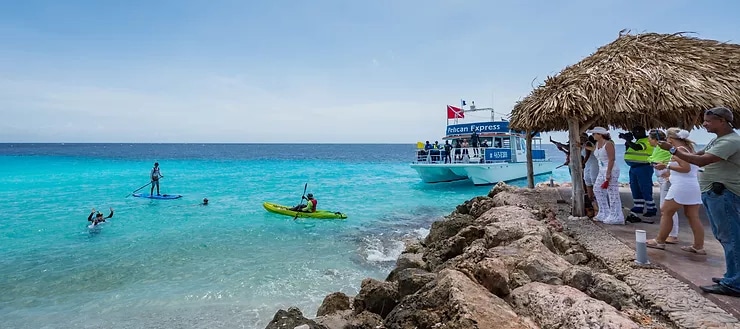
As passionate residents of our Dutch Caribbean Island, we must congratulate The Suit Ocean Team for creating more awareness about the importance of protecting our beautiful fringing reef systems in Curacao.
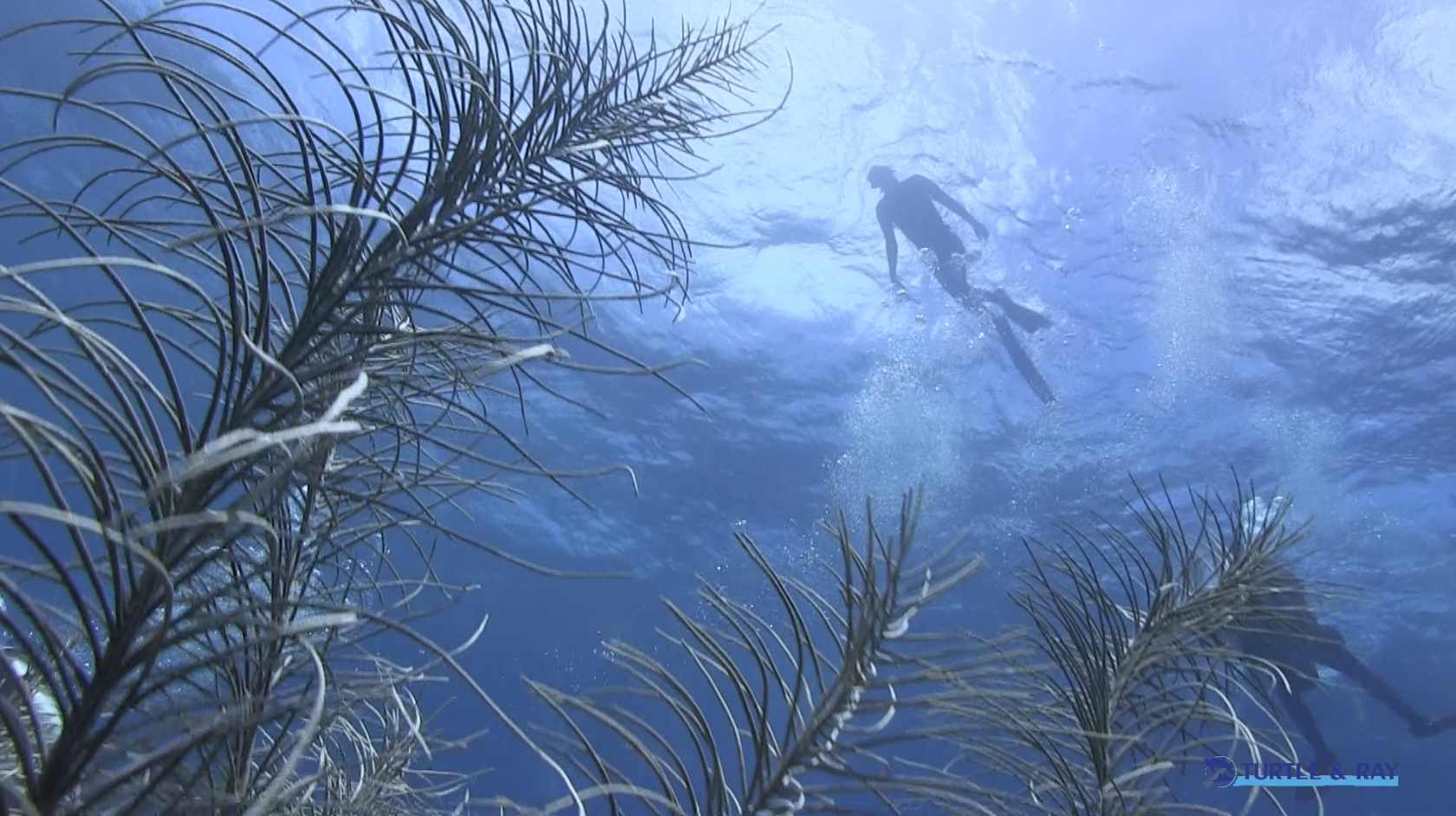
The film, Curacao Underwater Kunuku (Kunuku is Papiamento for Garden), not only documents this ultimate snorkeling adventure showing you how easy it is for everyone to access and enjoy a snorkel or diving experience, but it also showcases the interaction between man and nature, highlighting the beauty of underwater life while promoting conservation, preservation and the need to protect these vital habitats.
These are the key ingredients to this beautiful short film documentary. Watch NOW and please enjoy our “CURACAO UNDERWATER KUNUKU”.
This film, produced by the Lawrence Mensa Foundation (LMF), is also available in multiple languages including: Spanish, Papiamentu, Dutch, Portuguese and German.
Blogs
8 Unique Places to Go Snorkeling in Europe
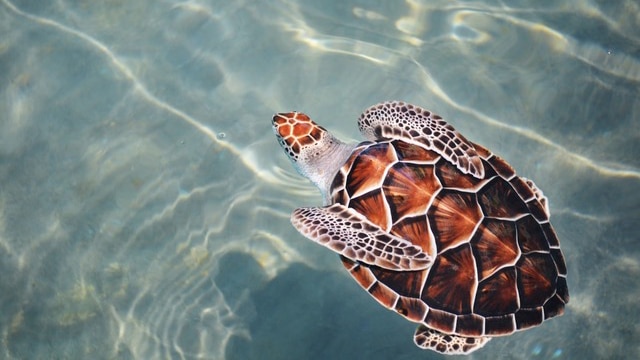
Snorkeling in Europe brings to mind golden sands dotted with beach umbrellas, clear waters, and rocky landscapes busy with Mediterranean fish life. Europe offers all of that, but it also offers so much more for snorkelers. Among Europe’s diverse countries, you can find impossibly bright blue lagoons, idyllic islands, and pristine marine reserves that host thousands of sea turtles and playful seals. You can snorkel over a sunken Roman city and explore one of the world’s premier marine megafauna hotspots. Ready for a summer vacation? Get inspired with our round-up of 8 unique places to go snorkeling in Europe.
Comino, Malta
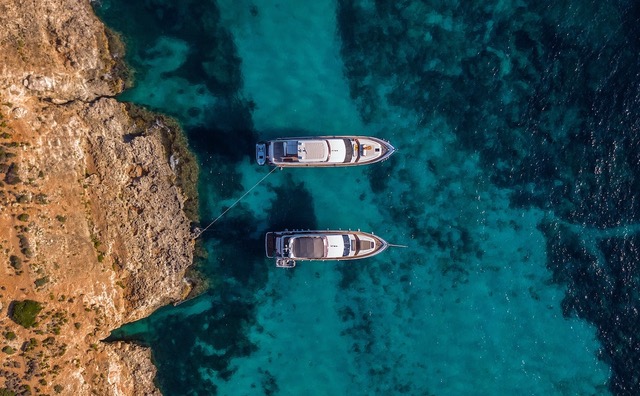
Sitting between the islands of Malta and Gozo, Comino Island is a paradise for snorkelers and divers alike. This tiny island hosts the brightest blue waters in the Maltese Islands and offers fantastic snorkeling among sheltered inlets and caves busy with diverse marine life.
Comino is best-known for hosting the Blue Lagoon; a bucket-list destination with crystal-clear waters and striking rocky landscapes. It is the perfect place to go snorkeling, take a hike, or simply marvel at the gorgeous scenery.
Medes Islands, Spain.
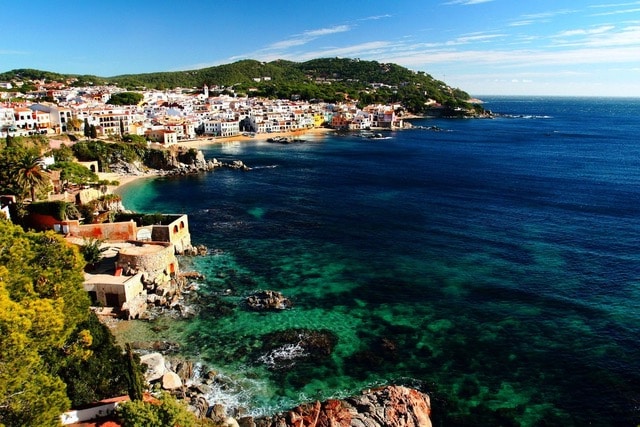
With over 500 dive sites and seaside destinations all along its coastline, Spain draws tourists from around the world. This vibrant country is one of Europe’s top vacation spots.
The Costa Brava in northeastern Spain is home to some of the most famous snorkeling spots in the country, one of which is the Medes Islands. This small archipelago of seven islets off L’Estartit is one of the best marine reserves in all of the Mediterranean.
Fishing was banned at the Medes Islands over 30 years ago, which has allowed marine life to flourish there. Seagrass meadows and rocky areas busy with fish await. A visit to this exceptional marine ecosystem is a must if you are visiting Spain.
Zakynthos, Greece.
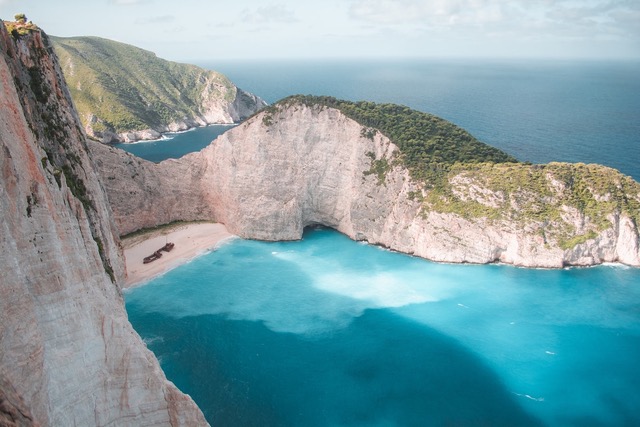
If you love sea turtles, Greece should be top of your list of places to go snorkeling in Europe.
Zakynthos is home to Marathonisi Island, also known as ‘Turtle Island’. This small island sits within the National Marine Park of Zakynthos and is a vital breeding ground for loggerhead sea turtles. The National Marine Park of Zakynthos was created in 1999 to protect these turtles, plus rare Mediterranean monk seals, which give birth to their young in Zakynthos’s secluded caves.
Marathonisi, nearby Cameo Island, and Zakynthos, are the top places in Europe to swim with turtles. In the summer months, thousands of loggerhead turtles visit the area to lay their eggs and you can go snorkeling with them.
Lundy Island, United Kingdom.
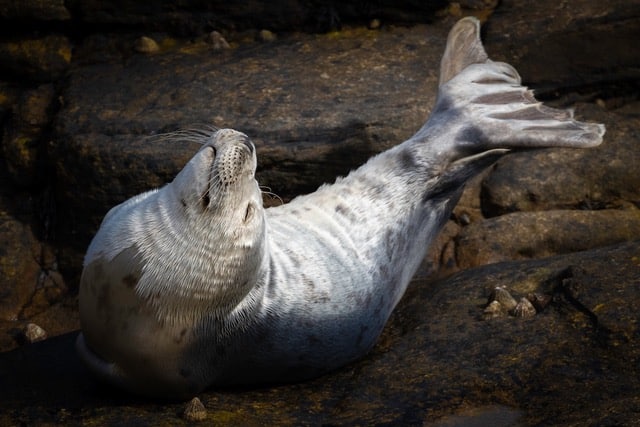
Snorkeling with seals is bound to leave a smile on your face. These cheeky animals are known for getting up close to snorkelers, checking them out, and occasionally nibbling fins.
Lundy Island is one of the best places to go snorkeling with seals in Europe. This island sits just 12 miles off the coast of Devon and hosts a breeding colony of Atlantic grey seals. The seals can be found playing in the surf and lounging in the sunshine at various points around the island.
Grab your snorkeling kit and dive in. Below the water, you will find shallow sunlit kelp forests, a variety of reefs, sea caves, and pinnacles. Lundy is a popular place for diving, but you will see plenty of marine life from the surface, including bright cup corals, anemones, fish, and hopefully seals.
Sunken City of Baiae, Italy
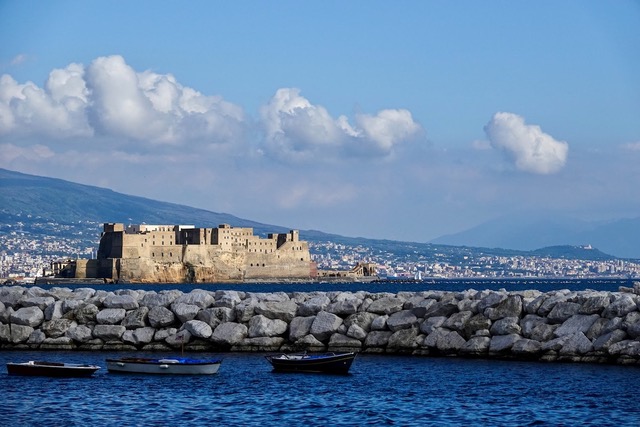
Not every great snorkeling experience is about marine life. In Italy, you can snorkel over ancient Roman ruins.
Two thousand years ago, Baiae was the destination for rich Romans to escape the city and relax by the seaside. Countless emperors and merchants flocked to Baiae’s shores every year, until tectonic activity forced this thriving city underwater.
Today, Baiae is an intact underwater city and one of the top highlights of snorkeling and diving in Italy. Observing these ruins is a breath-taking experience that brings history to life. There are Roman statues, a thermal spa, paved roads, and pillars dating back to the 1st century BC.
Corsica, France
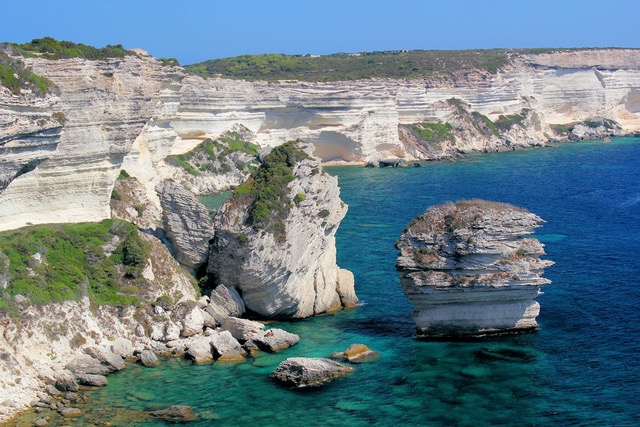
Corsica is renowned for its crystal-clear waters and shallow bays perfect for snorkeling with your kids.
This gorgeous island in the Mediterranean Sea boasts dramatic cliffs and white-sand beaches that hosts a wealth of accessible snorkeling spots. There are rich seagrass beds and rocky landscapes, plus small hidden coves dotted around the island. All of which host a diverse array of marine life, including huge schools of fish, octopi, moray eels, and starfish.
Corsica’s calm waters make it ideal not just for kids, but also for beginner snorkelers and those who want an easy time in the water. With water temperatures reaching up to 26 °C, plus water visibility of up to 30 meters, Corsica ticks the boxes for a laidback beach and snorkeling vacation.
Traun River, Austria
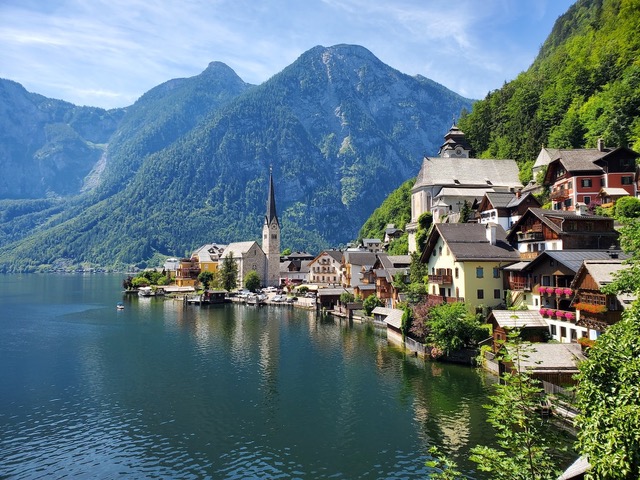
You might not think of Austria for snorkeling, but this land of iconic mountains and lush green landscapes has pristine lakes that attract divers and snorkelers every year. Away from the lakes, you can go snorkeling in spring-fed rivers that gleam in the sunshine.
Forget about floating on the surface when you go river snorkeling. At the Traun River in Upper Austria, river snorkeling involves rock jumping, canyoning, and some relaxed floating downstream. Along the way, you can explore interesting rock formations, underwater caves, and a waterfall, and meet freshwater fish life. This is also an excellent spot to go drift diving.
The Azores, Portugal
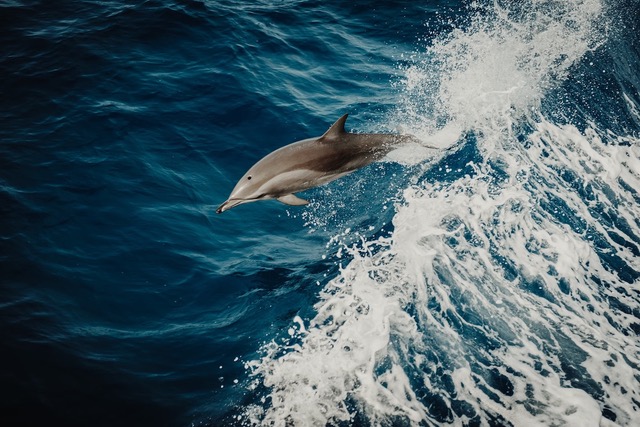
Sitting in the middle of the Atlantic Ocean and surrounded by endless blue waters, the Azores is a mecca for marine megafauna.
These famous islands host a remarkable amount of marine life, including more than 27 whale and dolphin species, mobula rays, and sharks. Snorkeling at the Azores is a great way to experience this wealth of life. You can swim with dolphins and snorkel among dozens of mobula rays and big pelagic fish.
And if you have a scuba certification, you can also go diving with mako and blue sharks. With water visibility reaching up to 60 meters, the Azores is incredible whichever way you choose to explore.
Kathryn Curzon, a conservationist and dive travel writer for SSI (Scuba Schools International), wrote this article.



